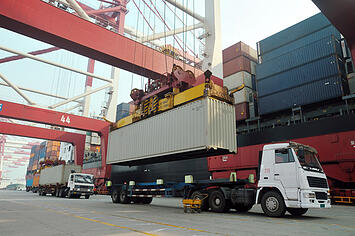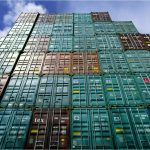 Congestion at the Ports of Los Angeles and Long Beach is not new news. During the months of contract negotiations between the Pacific Maritime Association (PMA) and International Longshore & Warehouse Union (ILWU), congestion was only getting worse.
Congestion at the Ports of Los Angeles and Long Beach is not new news. During the months of contract negotiations between the Pacific Maritime Association (PMA) and International Longshore & Warehouse Union (ILWU), congestion was only getting worse.
Now that the labor dispute has finally been resolved, the employers and labor should be able to focus on clearing the congestion and getting West Coast ports, especially the Southern California Ports of Los Angeles and Long Beach, flowing smoothly for shippers.
Here are three things being done to get imports and exports efficiently moved at the Ports of Los Angeles and Long Beach, where congestion has hit shippers and economy hard.
1. Increased Cooperation
Shortly after a tentative agreement was announced between the PMA and ILWU, Los Angeles Mayor Eric Garcetti and Long Beach Mayor Robert Garcia put out a joint press release pledging new levels of cooperation between the Ports of Los Angeles, Long Beach, and supply chain stakeholders.
The Ports of Los Angeles and Long Beach already cooperate, but that cooperation is now to be increased. The press release shares:
The two ports recently submitted to the Federal Maritime Commission an updated cooperative working agreement that clarifies and expands on their existing pact. The proposed update… will enable the ports to work together on strategies that will benefit both ports in the areas of supply chain logistics and gateway marketing, as well as environment, security and legislative advocacy.
The Port of Los Angeles posted the following video from the Tentative Labor Agreement News Conference that features Long Beach and Los Angeles Mayors Eric Garcetti and Robert Garcia.
While there’s a lot of lauding the PMA and ILWU for reaching agreement (yeah, good job for putting your own interests ahead of shippers and the economy for 9 months) and Mayor Garcia fidgeting (I sometimes have trouble holding still too), there’s also talk of investing in the Ports of Los Angeles and Long Beach.
“With an agreement in place, the ports of Long Beach and Los Angeles can focus on velocity, efficiency and environmental sustainability,” said Port of Long Beach Chief Executive Jon Slangerup. “Together, we will quickly re-establish our gateway as the most efficient route between Asia and North America. We thank Mayors Garcia and Garcetti for their leadership and we will all work to clear the current backlog as quickly as possible and put in place new measures to move cargo quickly even during our busiest times.”
“The changing face of seaborne trade is impacting major ports around the world,” said Port of Los Angeles Executive Director Gene Seroka. “In order to keep our competitive edge, it makes good sense for our ports to strategize and help facilitate changes in the supply chain that will enhance Southern California’s competitive advantage.”
2. New Chassis Pool
One of the biggest factors in creating congestion at the Ports of Los Angeles and Long Beach is the availability, organization, and shortage of chassis.
Chassis are absolutely necessary for the transportation of cargo containers imported and exported through the ports and moved by truck or rail across the country.
The Ports of Los Angeles and Long Beach have worked in cooperation, making a deal between three chassis owning companies, Direct ChassisLink Inc. (DCLI), Flexi-Van Leasing Inc., and TRAC Intermodal to create a chassis pool for the San Pedro Bay ports.
DCLI, Flexi-Van Leasing Inc., and TRAC Intermodal are combining their chassis to form what is called the “gray chassis fleet” or “gray chassis pool” or “pool of pools” to fight the chassis problem.
Whatever they call this pool of chassis, it went into operation on March 1st and is already garnering praise from the drayage part of the international shipping community working at the Ports of Los Angeles and Long Beach, according to a Bill Mongelluzzo article in the Journal of Commerce.
A press release from the Ports of Los Angeles and Long Beach sum up how the new chassis pool works:
Marine terminals have experienced a “chassis imbalance,” created by non-interoperable chassis pools, which has led to delays. The new pact allows more than 80 percent of chassis in service at the ports of Long Beach and Los Angeles to be used interchangeably, which will greatly improve the ease and efficiency of obtaining chassis.
The agreement creates a new chassis supply model with a team of representatives from each of the three pool operators overseeing day-to-day logistics and repositioning of more than 81,500 chassis. The pools will remain commercially independent, with each chassis provider competing for business and setting its own leasing terms and rates. A separate third-party service provider will manage billing and other proprietary information.
Implementation of the agreement is expected to provide immediate relief to the region’s current congestion problems. The process included a review by the Antitrust Division of the U.S. Department of Justice, which found, “The increased flexibility created by the interchangeability will enhance customer service, improve chassis productivity and respond to the desire of the Long Beach and Los Angeles ports authorities to achieve better overall utilization of the region’s chassis fleets.”
3. Peel Off Program
The third way that the Port of Los Angeles is working to solve the congestion problem is a new “peel off” program.
The Port of Los Angeles put out a press release that describes how the program works as follows:
The Port teamed with stevedoring company The Pasha Group, harbor trucking firm Total Transportation Services Inc. (TTSI), several marine container terminal operators and a core group of major retailers to create the program, which involves “peeling off” containers of high-volume customers to a near-dock yard where they are sorted for destination to inland distribution centers.
…
Under “Peel Off,” import containers loaded with goods belonging to high-volume shippers are stacked together in a block upon arrival at the Port. The terminals expedite TTSI trucks through their gates to retrieve the containers and deliver them to the near-dock yard less than a mile away where they are sorted. The same trucks loop back to the terminals for the next inbound container. The trucks keep boxes moving by delivering outbound containers on the return leg.
The end result is that shipping containers are moved from the docks where they’re unloaded from ships faster and trucks are being used much more efficiently
“We have found an efficient way to get containers to their destination that is beginning to pay off,” said Port of Los Angeles Executive Director Gene Seroka. “We’re acting on our pledge to our customers to harmonize the supply chain and make it work better. Permanently.”
We’ll be watching as the ports clear the backlog of shipping containers over the next few months and see how effective these actions to get shippers’ cargo moving are at making the Ports of Los Angeles and Long Beach efficient.

